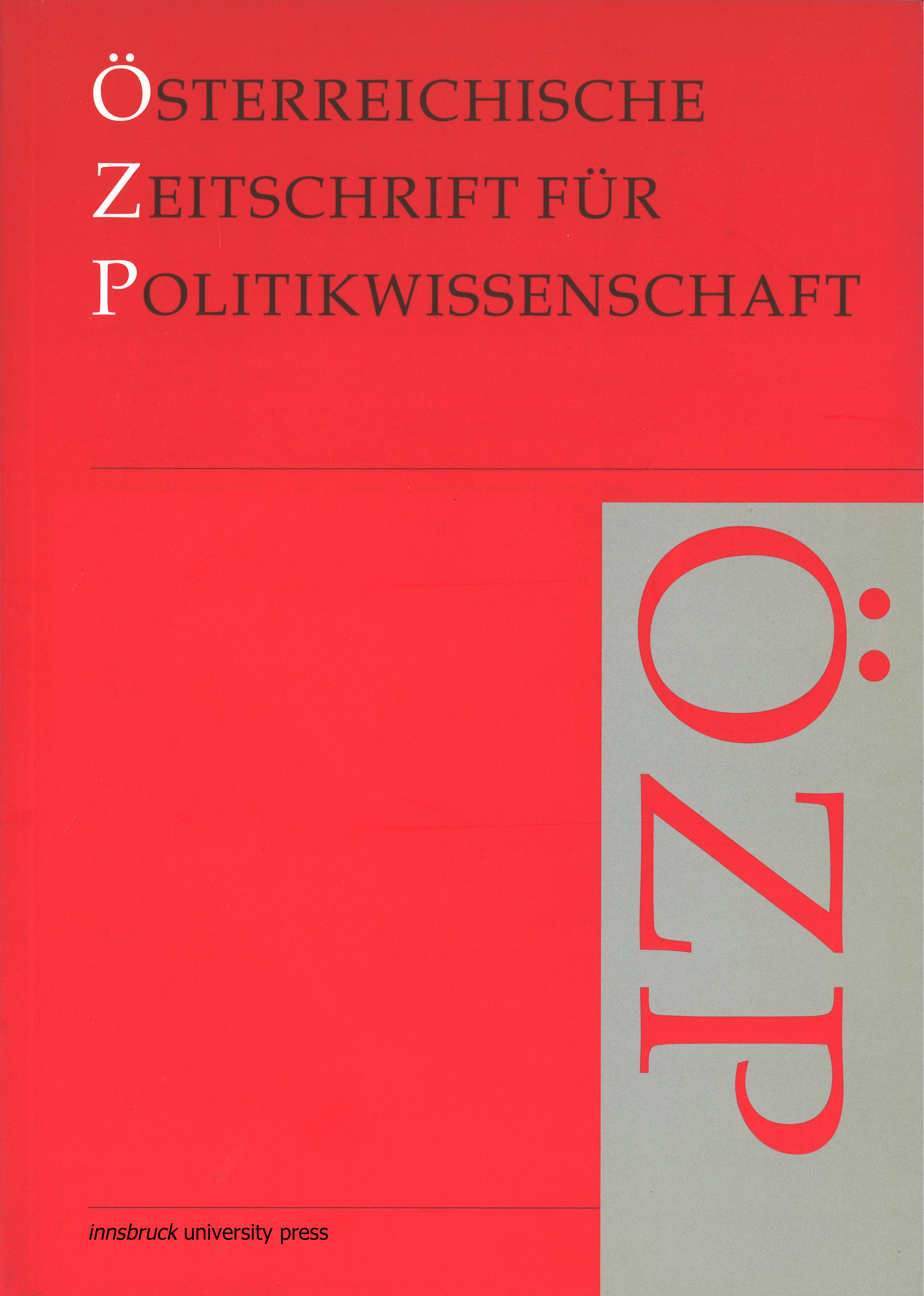Zitadelle „virtueller Nationalstaat“: Die Europäische Union und die Politik interner Schließung europäischer Einwanderungsländer
DOI:
https://doi.org/10.15203/ozp.712.vol37iss1Keywords:
Migrationspolitik, europäischer Vergleich, Denationalisierung, Renationalisierung, europäische Integration, virtueller NationalstaatAbstract
Nach dem Amsterdamer Vertrag und dem Tampere Programm von 1999 sollte in der EU bis 2004 ein Konzept für eine gemeinschaftliche Migrations- und Asylpolitik verabschiedet sein. Dieses Vorhaben ist gescheitert, obwohl die Voraussetzungen günstig erschienen: Die Migrationsregime der EU-15 hatten sich einander angeglichen und in einigen Ländern mehrten sich bereits seit den neunziger Jahren Anzeichen, die Migrationspolitik wieder offener zu gestalten. Eine genauere Betrachtung der inneren Verfasstheit der Migrationsgesellschaften offenbart jedoch eine differenzierte Situation in der Einwanderungsregion Westeuropa, und die Migrationspolitik der Einwanderungsländer scheint auf den ersten Blick einer widerstreitenden Logik zwischen externer Öffnung und interner Schließung gegenüber Migration zu folgen. In dem Beitrag soll auf der Grundlage eines Vergleichs der 15 alten EULänder diese widerstreitende Logik näher beleuchtet und untersucht werden, ob sich dahinter die Strategie verbirgt, einer Denationalisierung – im Prozess der europäischen Integration – eine Politik der Renationalisierung entgegenzusetzen. Es wird argumentiert, dass sich hier Grundzüge eines politischen Konzepts von Zitadellen aus „virtuellen Nationalstaaten“ in der „Festung Europa“ erkennen lassen. Dieses Konzept wirkt dem Bedarf an Einwanderung ebenso entgegen, wie es der europäischen Integration Grenzen setzt.Downloads
Issue
Section
License
The OZP is the authorized quarterly publication of the Österreichische Gesellschaft für Politikwissenschaft (ÖGPW, Austrian Political Science Association)
The author of an article (in case of multiple authors: the corresponding author, responsible for releasing this material on behalf of any and all co-authors) accepted to be published in the OZP hereby acknowledges the following Copyright Notice:
- The author retains the copyright to the article.
- It is the responsibility of the author, not of the OZP, to obtain permission to use any previously published and/or copyrighted material.
- Publication of a submitted text is dependent on positive results from the peer reviewing. In such a case, the OZP editors have the right to publish the text.
- In case of publication, the article will be assigned a DOI (digital object identifier) number.
- The author agrees to abide by an open access Creative Commons Attribution (CC BY nc) license. The license permits any user to download, print out, extract, reuse, archive, and distribute the article in any non-commercial way, so long as appropriate credit is given to the author and source of the work.
- The license ensures that the author’s article will be available as widely as possible and that the article can be included in any scientific archive. In order to facilitate distribution, the author agrees that the article, once published, will be submitted to various abstracting, indexing and archiving services as selected by the OZP.
- In addition, the author is encouraged to self-archive the article, once published, with reference to the place of the first publication.
- After the contribution appears in the OZP, it is still possible to publish it elsewhere with reference to the place of the first publication.
- The finished article, if published, will include a correspondence address (both postal and email) of the author.
- If written under the auspices of a grant from one or more funding agencies, such as FWF (Austrian Science Fund), ERC (European Research Council), and Horizon 2020 (EU Framework Programme), an article accepted for publication has to be deposited in an Open Access archive. The OZP’s archiving policy is compliant with these provisions. (In case the article derives on funding from a different source, the author is responsible to check compliance of provisions.)




